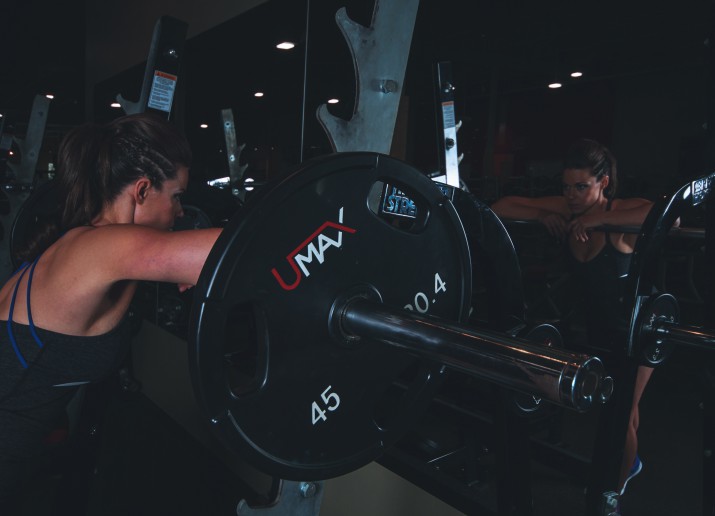
The most common warm up that can be observed in gyms all over the world is hitting the treadmill prior to weight training for around 10-15 minutes to “get the blood flowing”. But is this really the way you should go if for example today’s training session consists of heavy squats and lower body assistance exercises? The short answer is definitely no! But what is the optimal warm up, if not “getting warm” on the treadmill or stationary bike first?
Therefor it is essential to recall what weight training basically is: specific movement patterns under controlled loads. And how do you prepare your body for those kind of movement patterns? By exactly executing those movements under lighter load while gradually increasing the resistance. Thus your warm up should be exercise-specific.
How to specifically warm up for compound movements
Going back to the heavy squats and lower body assistance exercises mentioned above, an exercise-specific warm up would look like that:
Let’s imagine an intermediate lifter whose goal for his squat today is accomplishing 5 sets of 5 @ 140 kg. He would enter the gym with the mindset of rocking todays lower body session.
After dressing his sport clothes and putting on his weight lifting shoes, he would pass by the treadmill section with a smile on his face knowing that all those people are just wasting valuable training time and head right to the squat rack. There he would get under the empty barbell for his first warm up set.
Till he reaches his first set of 5×5@140 kg the warm up process could look like that:
- Warm up set: empty bar (20 kg) x 15 | 20 seconds rest
- Warm up set: 60 kg x 8 | 30 seconds rest
- Warm up set: 90 kg x 5 | 60 seconds rest
- Warm up set: 110 kg x 3 | 150 seconds rest
- Warm up set: 130 kg x 2 | 210 seconds rest
- Work set: 140 kg x 5 | 300 seconds rest
Utilizing this method our intermediate lifter can be sure that his central nervous system (cns) is optimally activated and prepared for the upcoming heavy squat work sets. The grade of cns-activation determines how effectively you can tell your muscles what they have to to – simply spoken.
By gradually increasing the weight load while decreasing the amount of repetitions during the warm up phase the lifter also doesn’t need to fear getting fatigued or his muscle glycogen stores emptied before the actual work set. It can also be mentioned that the warm up sets also activate cardiovascular processes even though those are not really crucial for genuine weight training.
Reasons contra cardio as warm up
In case you’re still not convinced of cutting the habit of treadmill or stationary bike usage, I want to give you more reasons why you should stop this method and switch to exercise specific warm up.
As mentioned above cardiovascular process don’t play a crucial role when it comes to expressing strength during weight training. Therefore activating those processes (which are also activated anyway during exercise-specific warm up sets) is just a waste of valuable training time.
Proper training already puts a high time demand on your weekly schedule, so why waste time on methods, that are not necessary to your goals? Even when your goal is fat loss, the treadmill is not as crucial as generally propagandized. Proper weight training and the right nutrition will get you closer to a healthier and more aesthetic body- but this is a total different story.
Furthermore cardio prior to weight training can produce slight fatigue that is contra productive to your strength goals.
Let’s also not forget about upper body training, where it remains mysterious, how the treadmill or stationary bike should initiate the popular “blood flow” in your pectorals major (major chest muscle) or the latissimus dorsi (major back muscle). Those muscles be better activated with optimal warm up sets on the bench or the cable lat pull down.



